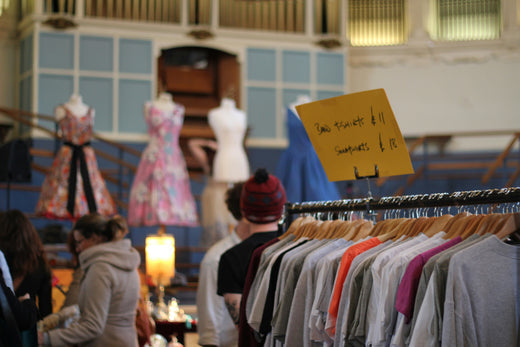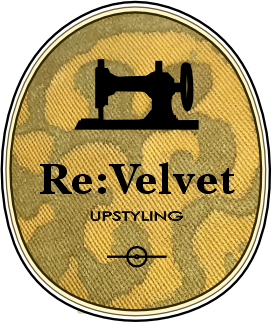
THE SOCIAL CONTRIBUTION OF THE CIRCULAR ECONOMY: Why It Matters to You
In a world where fast fashion, mass production, and waste often dominate the conversation, the circular economy (CE) offers a refreshing alternative. But this isn’t just about recycling or trendy eco-friendly slogans—it’s a fundamental shift in how we think about products, resources, and communities. For consumers like you, who value high-quality, unique goods and are disenchanted with mainstream retail brands, the circular economy might be your perfect match. Let’s explore why.
What Is the Circular Economy?
The circular economy flips the script on the traditional “take, make, dispose” model. Instead of products ending up in a landfill, CE emphasizes extending the life cycle of goods through repair, reuse, recycling, and redesign. It’s about creating systems where nothing is wasted, and everything has value—even when it’s no longer “new.”
Think of it like this: instead of buying a cheaply made, cookie-cutter item destined to fall apart in a year, you invest in something that lasts, something with a story. Maybe it’s a refurbished antique chair, a locally crafted garment, or a reimagined piece of jewelry. These items aren’t just good for the planet—they’re part of a movement that’s reshaping society.
How the Circular Economy Benefits Society
Beyond the environmental perks (and there are plenty), the circular economy is making a huge social impact. Here’s how it’s creating a better world for everyone—and why you should care.
1. Empowering Local Communities
Ever notice how products from big retail brands often feel disconnected from any real community? They’re made in faceless factories, shipped halfway across the world, and sold without much thought to their origins. In contrast, the circular economy thrives on local connections.
-
Supporting Artisans and Small Businesses: From upcycled furniture to handmade clothing, CE revitalizes local industries. By purchasing these unique, high-quality items, you’re not just avoiding the high street—you’re actively investing in the talent and creativity of your community.
-
Fostering Collaboration: Circular initiatives often bring people together. Community repair cafes, swap events, and local recycling hubs encourage connection and shared purpose. Instead of throwing away an old jacket, you might learn to repair it at a neighborhood workshop—keeping your wardrobe fresh and meaningful.
2. Job Creation and Skills Development
One of the most exciting aspects of the circular economy is its potential to create jobs—especially for those who’ve been left behind by traditional industries.
-
New Opportunities in Green Jobs: Repair specialists, upcycling artisans, circular supply chain managers—the list goes on. As the demand for sustainable and circular products grows, so does the need for skilled workers. These aren’t throwaway roles; they’re careers with purpose and longevity.
-
Upskilling Communities: Circular businesses often focus on teaching skills like sewing, carpentry, or electronics repair. Imagine the joy of not only owning a one-of-a-kind piece but knowing your purchase helped someone gain valuable expertise and financial independence.
3. A Win for Environmental Justice
Not all communities experience waste and resource scarcity equally. Vulnerable populations often bear the brunt of pollution and overproduction. The circular economy seeks to change that by redistributing resources and reducing harm.
-
Less Waste, Fewer Landfills: When we prioritize reuse and recycling, we’re reducing the need for massive dumps that disproportionately affect low-income areas. Cleaner environments mean healthier, happier communities.
-
Equitable Access to Resources: Circular practices often make high-quality goods more affordable. For instance, buying refurbished electronics or second-hand clothing can offer premium quality at a fraction of the cost—perfect for savvy consumers who value both style and substance.
4. Healthier Lives, Happier Communities
Here’s a hidden bonus: the circular economy isn’t just good for the planet—it’s good for your health too.
-
Reducing Exposure to Toxins: When products are made to last, they’re often free of the harmful chemicals found in cheaper, mass-produced alternatives. That’s better for you and the people making them.
-
Lowering Public Health Costs: Cleaner air, less waste, and more sustainable production methods mean fewer health problems across the board. A society that prioritizes sustainability is a society that prioritizes well-being.
5. Preserving Traditional Crafts and Supporting Endangered Professions
In a world driven by mass production and automation, many traditional crafts and professions are disappearing at an alarming rate. The circular economy offers a lifeline to these invaluable skills, breathing new life into industries that have long been overshadowed by large-scale manufacturing.
-
Revitalizing Lost Arts: Professions like cobbling, furniture restoration, tailoring, and metalwork are experiencing a revival thanks to the circular economy. These crafts, once essential to daily life, have been sidelined by cheaper, disposable alternatives. By supporting artisans who specialize in repairs and bespoke creations, the circular economy ensures these time-honored skills are passed down to the next generation.
-
Attracting the Next Generation: Let’s face it—traditional crafts haven’t always been seen as “cool” career options. The circular economy changes that narrative, framing these professions as not only relevant but essential to a sustainable future. Through education and outreach programs, young people are rediscovering the appeal of hands-on, creative work. Imagine the satisfaction of restoring a vintage leather bag or reupholstering a mid-century armchair—crafts that produce not just beautiful objects but a deep sense of purpose.
-
Opportunities for Training and Mentorship: Many young people today are eager to find meaningful careers that align with their values. Circular businesses often provide apprenticeships, workshops, and mentorship programs to bridge the generational gap in these professions. This isn’t just about keeping the past alive—it’s about innovating for the future by blending traditional methods with modern ideas.
By preserving and elevating these crafts, the circular economy does more than save skills—it saves stories, cultural heritage, and the artistry that makes each piece truly unique.
Case Studies: The Circular Economy in Action
Let’s take a quick tour of some real-world examples where the circular economy is making waves.
-
Fashion with a Conscience: Brands like Patagonia and Eileen Fisher are redefining sustainable fashion by offering repair services and encouraging customers to buy second-hand. The result? Stylish, durable clothing that feels as good as it looks.
-
Furniture Reimagined: Companies like Vitsœ focus on modular furniture that’s designed to evolve with your needs. Instead of buying a new bookshelf every few years, you add to or adapt the one you have—saving money and resources.
-
Community Repair Cafes: These global grassroots initiatives let people fix their broken items for free, from toasters to toys. It’s not just about repairs; it’s about rekindling a culture of care and creativity.
Challenges in Scaling the Circular Economy
Of course, the circular economy isn’t without its hurdles. While its benefits are clear, there are barriers that need addressing:
-
Changing Mindsets: Let’s face it—many of us are used to the convenience of fast fashion and mass-produced goods. Shifting to a circular mindset takes time and education.
-
Infrastructure Gaps: Not every community has access to the resources needed for a fully circular system. Building these networks requires investment and innovation.
-
Policy and Industry Resistance: Large corporations often resist circular practices because they challenge traditional profit models. Advocating for systemic change is crucial.
How You Can Support the Circular Economy
As a consumer, you have more power than you might think. Every purchase you make sends a message about what you value. Here’s how you can get involved:
-
Shop Second-Hand or Upcycled: Thrift stores, vintage shops, and artisan markets are treasure troves of unique, high-quality finds.
-
Repair Before Replacing: Whether it’s your favorite pair of shoes or a trusty old appliance, consider fixing it instead of tossing it out.
-
Support Circular Brands: Look for companies that prioritize sustainability, offer repair services, or operate on a rental or resale model.
-
Spread the Word: Share your love for circular finds on social media. The more people embrace this mindset, the faster it grows.
A Circular Future: Why It Matters
The circular economy is more than a trend—it’s a movement with the potential to transform society. By investing in quality over quantity, choosing products with stories over mass-produced sameness, and supporting a system that values people and the planet, you’re not just a consumer—you’re a changemaker.
So next time you’re looking for something special—whether it’s a unique piece of jewellery, a beautifully crafted piece of furniture, or a stylish outfit that stands the test of time—remember this: you’re not just buying a product. You’re contributing to a better world.
Let’s make the circular economy the norm, not the exception. Your choices matter—let them shine.
